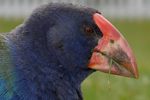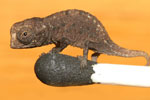The biodiversity of Europe today is largely linked to environmental conditions decades ago, according to a new large-scale study in the Proceedings of the National Academy of Sciences (PNAS). Looking at various social and economic conditions from the last hundred years, scientists found that today’s European species were closely aligned to environmental impacts on the continent from 1900 and 1950 instead of more recent times. The findings imply that scientists may be underestimating the total decline in global biodiversity, while future generations will inherit a natural world of our making.
“The progressive impact of environmental degradation on the loss of global biodiversity is strongly linked to key socioeconomic
indicators such as human population size, land use, and gross domestic product (GDP). However, species populations do not necessarily respond immediately to environmental degradation but might do so with a delay,” the scientists write. This theory is known as ‘extinction debt,’ whereby it takes species several of their generations to show the full impact of habitat loss and other threats.
To test this theory, thirteen researchers looked at a broad array of threatened species (mammals, reptiles, fish, plants, dragonflies, and grasshoppers) across 22 European countries. Currently around 20-40 percent of these species are listed as threatened by the IUCN Red List. But the researchers found that some of the species groups—i.e. plants, dragonflies, and grasshoppers—were most closely aligned to European conditions of over a century ago: circa 1900. For mammals and reptiles, both 1900 and 1950 were most reflective, while fish was actually best correlated with contemporary conditions.

Therefore, the study finds evidence of an extinction debt of several decades for mammals and reptiles, and over a hundred years for plants and insects. As to why fish are different, the researchers weren’t sure.
“We do not know why fish behave differently, but it might be that anthropogenic impacts on freshwater ecosystems, such as water pollution, channelization, construction of dams, and water abstraction, have a more immediate effect because they not only reduce the quality and quantity of habitats, but directly and uniformly modify the medium in which species live,” the scientists write.
The researchers also note that species are now facing new threats that were largely absent in the early 20th Century, including a rapidly warming Earth and increased invasive species.
“Our results…suggest current commitments to stop biodiversity loss in the region are even more inadequate than currently appreciated,” the researchers warn noting also that the global IUCN Red List “might be too optimistic.” Given this, the scientists say conservation efforts will have to stepped up considerably to stave off mass extinction.
For decades, scientists have been warning that the Earth is nearing or already in the midst of a global mass extinction. Currently 21 percent of the world’s mammals are listed as threatened by the IUCN Red List, 13 percent of the world’s birds, 22 percent of the world’s reptiles, and 30 percent of the world’s amphibians.

Creek in Triglav National Park, Slovenia. Photo by: Rhett A. Butler.
CITATION: Stefan Dullinger et al. Europe’s other debt crisis caused by the long legacy of future extinctions. PNAS. 2013.
Related articles
How many animals do we need to keep extinction at bay?
(04/15/2013) How many animal individuals are needed to ensure a species isn’t doomed to extinction even with our best conservation efforts? While no one knows exactly, scientists have created complex models to attempt an answer. They call this important threshold the “minimum viable population” and have spilled plenty of ink trying to decipher estimates, many of which fall in the thousands. However, a new study in Conservation Biology shows that some long-lived animals may not need so many individuals to retain a stable population.
Humans killed over 10 percent of the world’s bird species when they colonized the Pacific Islands

(03/25/2013) Around 4,000 years ago intrepid Polynesian seafarers made their way into an untamed wilderness: the far-flung Pacific Islands. Over a thousands or so years, they rowed from one island to another, stepping on shores never yet seen by humans. While this vast colonization brought about a new era of human history, it also ended the existence of well-over a thousand bird species according to a new study in the Proceedings of the National Academy of Sciences (PNAS).
Scientists clone extinct frog that births young from its mouth
(03/18/2013) Australian scientists have produced cloned embryos of an extinct species of frog known for its strange reproductive behavior, reports the University of New South Wales.
Seeing the forest through the elephants: slaughtered elephants taking rainforest trees with them

(03/11/2013) Elephants are vanishing. The booming illegal ivory trade is decimating the world’s largest land animal, but no place has been harder hit than the Congo basin and its forest elephants (Loxodonta cyclotis). The numbers are staggering: a single park in Gabon, Minkebe National Park, has seen 11,100 forest elephants killed in the last eight years; Okapi Faunal Reserve in the Democratic Republic of the Congo has lost 75 percent of its elephants in fifteen years; and a new study in PLoS ONE estimates that in total 60 percent of the world’s forest elephants have been killed in the last decade alone. But what does that mean for the Congo forest?
Man drove Tasmanian Tiger to extinction in Australia
(02/01/2013) Man, not disease, drove the Tasmanian Tiger to extinction, according to a new study published in the Journal of Animal Ecology.
Scientists could name every species on Earth in 50 years

(01/28/2013) A bold new paper in Science argues that the world’s species could be named and described before they vanish into extinction, though the threat of eventual extinction will remain for many, especially as climate change worsens. The scientists say that contrary to popular belief, there are more taxonomists working than ever before and there are likely less species on Earth than often reported, making finding and naming the world’s species within reach this century.